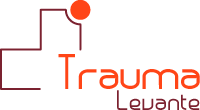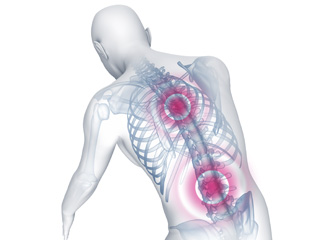Low back pain (LBP) is a very common disorder. It is the most frequent reason why a person consults with his/her primary care doctor. It affects about 80% of people at some point in their lives.
This pain involves the muscles and bones located in the low area of the back. We are talking about a non-specific pain that improves with rest and worsens with self-limited movements over time. In the 90% of cases it vanishes within the first 3-4 weeks.
There are many causes that may contribute to low back pain. It is usually related to poor physical condition, lack of good postural habits, shortage of muscle tone at abdominal or lumbar level associated with a shortening of the ischiotibial muscles.
Although lower back pain can cause restlessness in people living with it, on 15-20% of the occasions it is due to an identifiable anatomical damage (spondylolisthesis, vertebral fracture, or degenerative spinal stenosis). Only 2% of cases originate from a serious disease.
It is very important to know what symptoms would make us suspect of underlying patholo-gies such as metastasis, aortic aneurysm, kidney colic, pancreatitis or gastric perforations.
Warning signs:
- Unchangeable dorsal pain.
- Back pain at dorso-lumbar region associated with sleep problems.
- Weight loss.
- Prolonged fever.
- Glucocorticoid treatment.
- Previous history of Cancer.
Treatment
From the outset the treatment recommends a decrease in activity as the pain allows. Remaining bed-ridden is totally contraindicated since prolonged rest. May cause muscular atrophy (1-1,5% muscle mass loss per day of rest), cardiovascular deteroriation (15% loss of aerobic capacity in 10 days), mineral loss with hypercalcemia and hypercalciuria (raised blood calcium and urine calcium drop) and risk of thromboembolism.
From now on it is indicated the treatment with non-steroid antiinflammatories and muscle relaxants. In addition to pharmacological treatment it is possible to combine physical therapy which would consist of massage on the buttocks and lumbar region, electrotherapy, ul-trasound, shortwave, radar or microwave.
Once we have controlled the symptoms we will restart the continuation of as much daily acti-vity in a progressive way. You should know that you need a proactive attitude for low back pain control. Scientific studies have proved that exercise helps vastly to the management and improvement of the LBP. We suggest that patients do the exercises shown on the webpage once a day at least. Other activities that encourage back pain control are yoga, swimming or pilates.
If pain continues more than 4 weeks it is highly recommended to carry out an X-ray from which we can dismiss spondiyolisthesis, scoliosis, vertebral osteoporotic fractures, and as-sess how degenerative is the spinal stenosis.
Finally we want to mention that surgery may be only useful in those with uncontrollable and chronic pain despite the analgesic intake. As a preliminary step before surgery it should be pointed out a procedure called RHIZOLYSIS, which involves a non-invasive technique with excellent results for chronic pain together with lumbar arthrosis. In the absence of the issues mentioned before, there is no clear evidence of a benefit from surgery.








